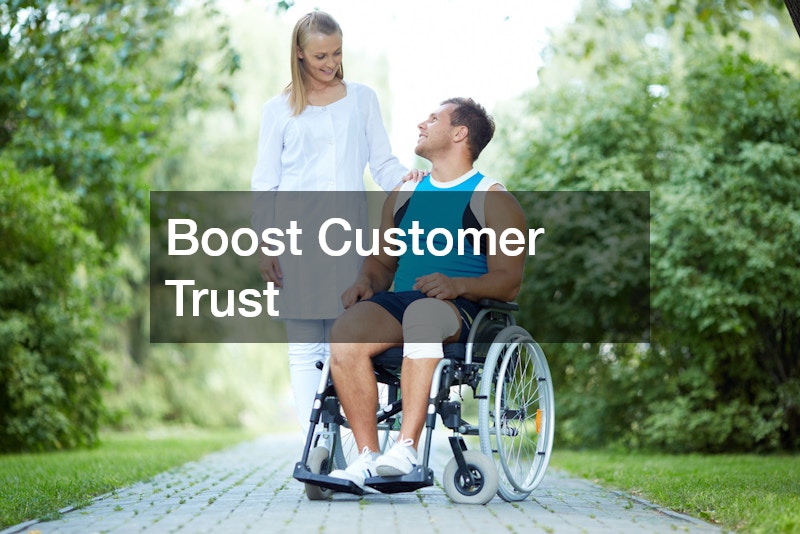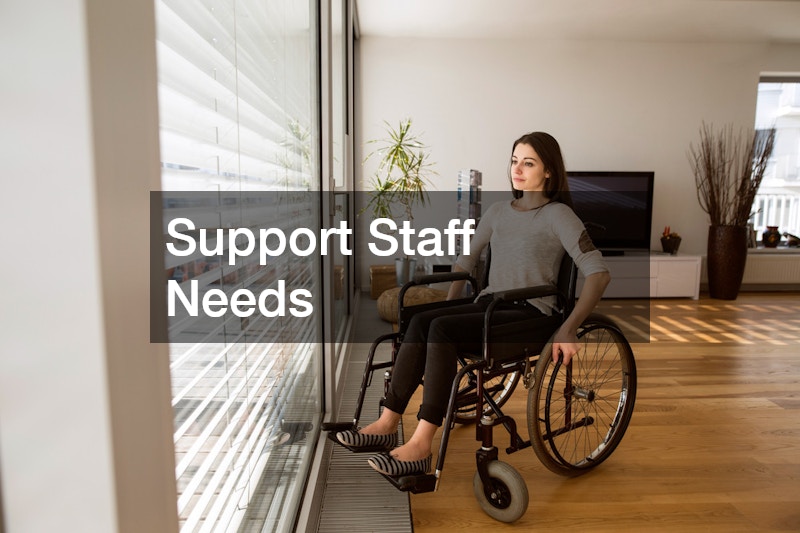Ensuring your small business prioritizes accessibility is not just about meeting regulations; it’s about creating an environment where everyone feels welcome and valued. Many owners underestimate how essential access to a building truly is until they face challenges such as customer complaints, legal issues, or missed opportunities. Accessibility extends beyond compliance—it reflects a business’s commitment to inclusivity, professionalism, and customer care. When customers or employees know they can enter and move about without difficulty, it fosters trust and builds a stronger reputation for the company.
The reasons for maintaining ADA standards span across different aspects of operations. From ensuring legal safety to enhancing the customer experience, each element plays an integral role. Businesses that neglect accessibility often find themselves falling behind competitors who invest in better entryways, smoother surfaces, and clearly marked areas. These details communicate respect for both customers and employees. Furthermore, accessibility improvements often go hand in hand with upgrades to aesthetics, safety, and durability, creating a better environment overall.
In this article, we’ll explore ten important reasons why your business should focus on accessibility. We’ll begin with the legal basics, which establish the foundation for compliance and safety. Then, we’ll examine how safety measures and customer trust contribute to a more inviting environment. The article will also show how enhancing your image, supporting staff needs, and planning for easy entry can benefit daily operations. We’ll dive into the importance of keeping surfaces smooth, marking spaces clearly, preparing for seasonal challenges, and making long-term investments in infrastructure. Each section highlights how thoughtful decisions in design, upkeep, and planning can create lasting advantages. Together, these insights underscore why ADA standards are more than rules—they’re opportunities to improve how your small business functions and how it is perceived in the community.
1. Start With Legal Basics

Meeting accessibility requirements is fundamentally tied to legal compliance, and ignoring these obligations can quickly put a business at risk. Local and federal regulations exist to protect the rights of individuals and ensure that every person has fair access to a building. By understanding these laws, businesses can avoid lawsuits, fines, and reputational damage while showing their commitment to inclusivity. A proactive approach not only prevents costly mistakes but also fosters a culture of respect and fairness within the organization.
Paving services often play a critical role in supporting compliance. Smooth walkways, properly graded entrances, and well-maintained surfaces are part of providing safe and reliable passage. When these details are overlooked, it can create hazards that make entry difficult or impossible for certain individuals. By investing in the right improvements, a business positions itself as one that values the safety and rights of everyone who approaches its property.
Establishing a strong legal foundation through reliable upgrades reduces long-term risks. Owners who prioritize compliance find that they can redirect energy and resources into growth rather than fighting preventable battles. Maintaining consistent pathways and access points also sends a message that the business is serious about doing things right. Customers, employees, and partners notice when attention is paid to these details, and over time, it enhances the trust and credibility of the business in the community.
2. Improve Daily Safety
Safety is one of the most immediate benefits of ensuring accessibility, and it directly impacts every person entering or leaving your property. Slips, trips, or falls can happen in seconds, but the consequences may be long-lasting. By taking steps to improve safety, businesses create a more secure environment where customers and employees can move about without unnecessary risks. Reducing hazards is not only a moral obligation but also a way to cut down on liability and potential injury-related costs.
An asphalt contractor can be instrumental in improving safety measures around an entryway. These professionals ensure that surfaces are level, durable, and properly maintained, which minimizes the risk of accidents. Uneven pavement, potholes, or cracks can create serious obstacles for individuals, especially those with mobility challenges. With expert assistance, a business can significantly improve how customers experience access to a building while simultaneously lowering the chances of accidents occurring.
3. Boost Customer Trust

Trust is the foundation of customer loyalty, and accessibility is a key factor in building that trust. When people see a business that goes out of its way to make entry and navigation straightforward, they recognize the effort and care behind the decision. Accessibility signals that a company values all its customers equally, regardless of physical ability. This sense of inclusivity directly translates into higher satisfaction and repeat business.
Upgrades like a properly maintained asphalt driveway are often among the first things customers notice. A smooth, easy-to-navigate entry creates a strong first impression and reassures customers about the company’s standards. If the first step in accessing a property is riddled with difficulties, customers may subconsciously link that experience with the overall professionalism of the business. Making the path to access to a building simple and straightforward sets the tone for everything that follows.
4. Enhance Business Image
A strong business image is essential in attracting and retaining customers, and accessibility is a powerful tool for shaping that image. When accessibility is prioritized, it demonstrates professionalism, responsibility, and forward thinking. Customers judge businesses by the quality of their environment, and an accessible property communicates inclusivity and attention to detail. These qualities strengthen brand perception and help set a business apart from its competitors.
Practical improvements such as asphalt sealcoating can play an important role in creating a polished, professional appearance. A well-maintained exterior conveys pride in ownership and enhances the overall atmosphere around the entry points. The smoother, darker finish achieved through this process improves visibility and creates a clean aesthetic that makes access to a building more appealing. Small details like this can significantly influence how customers perceive the business as a whole.
5. Support Staff Needs

Accessibility isn’t just about customers; it’s also about creating an environment where staff can work comfortably and effectively. Employees who know their workplace is accessible feel valued, and that directly influences morale and productivity. Ensuring that staff have safe, convenient routes into and around the property helps reduce stress and fosters a stronger connection with the organization. A business that makes access to a building a priority demonstrates that it cares for both its workers and visitors.
One way to achieve this is by maintaining clear and consistent parking lot striping. Well-marked spaces ensure that employees, including those with mobility challenges, know exactly where they can park and how to move safely toward entry points. This attention to detail reduces confusion, prevents congestion, and enhances the overall flow of traffic. For staff who must arrive during early mornings or late evenings, clearly defined routes provide an extra layer of security and confidence.
6. Plan For Easy Entry
The entry point to a business is more than just a door; it represents the first true connection between a customer and the company. If entry is complicated, confusing, or unsafe, the impression left is often negative. Planning for easy entry is therefore essential for ensuring that every visitor feels comfortable and welcomed. Clear signage, unobstructed pathways, and accessible routes all contribute to a smoother experience for those entering the property.
Investing in parking lot and garage systems can significantly improve how people approach and enter your business. These systems streamline the process of finding, navigating, and using parking spaces, ensuring that visitors can quickly access the entry points without frustration. By coordinating vehicle access with pedestrian flow, businesses make access to a building far more efficient for everyone.
When entry is thoughtfully designed, it eliminates unnecessary stress and creates a seamless transition from parking to the front door. This not only improves the customer experience but also reduces bottlenecks and potential safety hazards. A small business that prioritizes easy entry builds a reputation for being thoughtful and organized, two qualities that customers deeply appreciate and remember when deciding where to return.
7. Keep Surfaces Smooth

Smooth, stable surfaces are fundamental for safe and convenient accessibility. Cracked or uneven ground creates obstacles that can be dangerous for anyone, but especially for those with mobility challenges. A business that prioritizes surface maintenance ensures that visitors and staff can walk, roll, or move with confidence, reducing the risk of accidents. Keeping surfaces smooth also reflects pride in the property and attention to detail.
Concrete delivery plays a vital role in achieving these smooth surfaces. High-quality concrete ensures that walkways, ramps, and surrounding areas remain durable and functional over time. Without proper attention, rough or deteriorating surfaces can undermine all other accessibility efforts, making access to a building frustrating or even unsafe. A reliable concrete partner ensures that repairs and installations meet the highest standards of safety and function.
Long term, investing in durable surfaces reduces maintenance costs and protects the business from liability. Visitors who feel comfortable navigating the property are more likely to return, and employees benefit from a safer work environment. This type of forward-thinking investment enhances both the customer experience and the overall longevity of the property, turning accessibility into a valuable asset rather than an afterthought.
8. Mark Spaces Clearly
Clarity is essential when it comes to accessibility, and clearly marked spaces make a significant difference in how people experience your property. Whether it’s designated parking areas, walking paths, or directional guides, these markings create order and reduce confusion. An organized environment feels more welcoming, especially for individuals who may already be concerned about navigating safely.
A professional concrete service often helps create these clearly defined spaces. Durable markings, borders, or textured pathways guide individuals naturally toward entry points, simplifying the journey. This contributes to better access to a building while enhancing the overall look and feel of the property. Businesses that make markings a priority demonstrate a commitment to both functionality and aesthetics.
9. Prepare For All Seasons
Accessibility is not a one-time effort; it must be maintained throughout the year. Seasonal changes, especially in colder climates, can create serious challenges for accessibility. Snow, ice, and debris can quickly block pathways, turning safe areas into hazards. By preparing for all seasons, businesses demonstrate foresight and ensure that accessibility remains consistent no matter the weather.
A reliable snow removal service is essential to keeping pathways and parking areas clear during winter. Without this, even the most well-designed property becomes dangerous and inaccessible. Professional removal ensures that customers and staff can safely enter and exit the property, protecting them from slips and falls while maintaining dependable access to a building.
10. Invest In Long-Term Value
Long-term investments in accessibility are among the smartest decisions a small business can make. While initial upgrades may require resources, the value they provide over time far outweighs the costs. Accessibility features improve safety, build customer loyalty, and enhance the overall property value. Making these improvements ensures that a business is not only compliant today but also prepared for the needs of the future.
Adding a wheelchair ramp is a prime example of such an investment. This feature directly supports individuals with mobility challenges and makes access to a building easier for everyone, including parents with strollers or workers transporting goods. Ramps are one of the most visible symbols of accessibility, and their presence communicates respect, inclusivity, and care.
Ensuring accessibility goes far beyond meeting regulations; it touches nearly every aspect of how a small business operates and is perceived. Customers, employees, and community members all benefit when a company prioritizes inclusivity. By addressing safety, trust, image, employee support, and long-term planning, small businesses create an environment that encourages loyalty and growth. Each improvement, from smoother pathways to clearly marked spaces, plays a role in fostering a safer and more welcoming atmosphere and consistent and reliable access to a building.
For small businesses, the message is clear: accessibility is not optional. It is an essential part of modern operations that reflects responsibility and care. When businesses make the choice to prioritize accessibility, they create a ripple effect that benefits everyone who interacts with their property. By focusing on safety, inclusivity, and long-term value, companies ensure they remain strong and competitive in an ever-evolving market. Embracing these ten reasons confirms that maintaining ADA standards is more than compliance—it is a commitment to building a better future through reliable access to a building.
